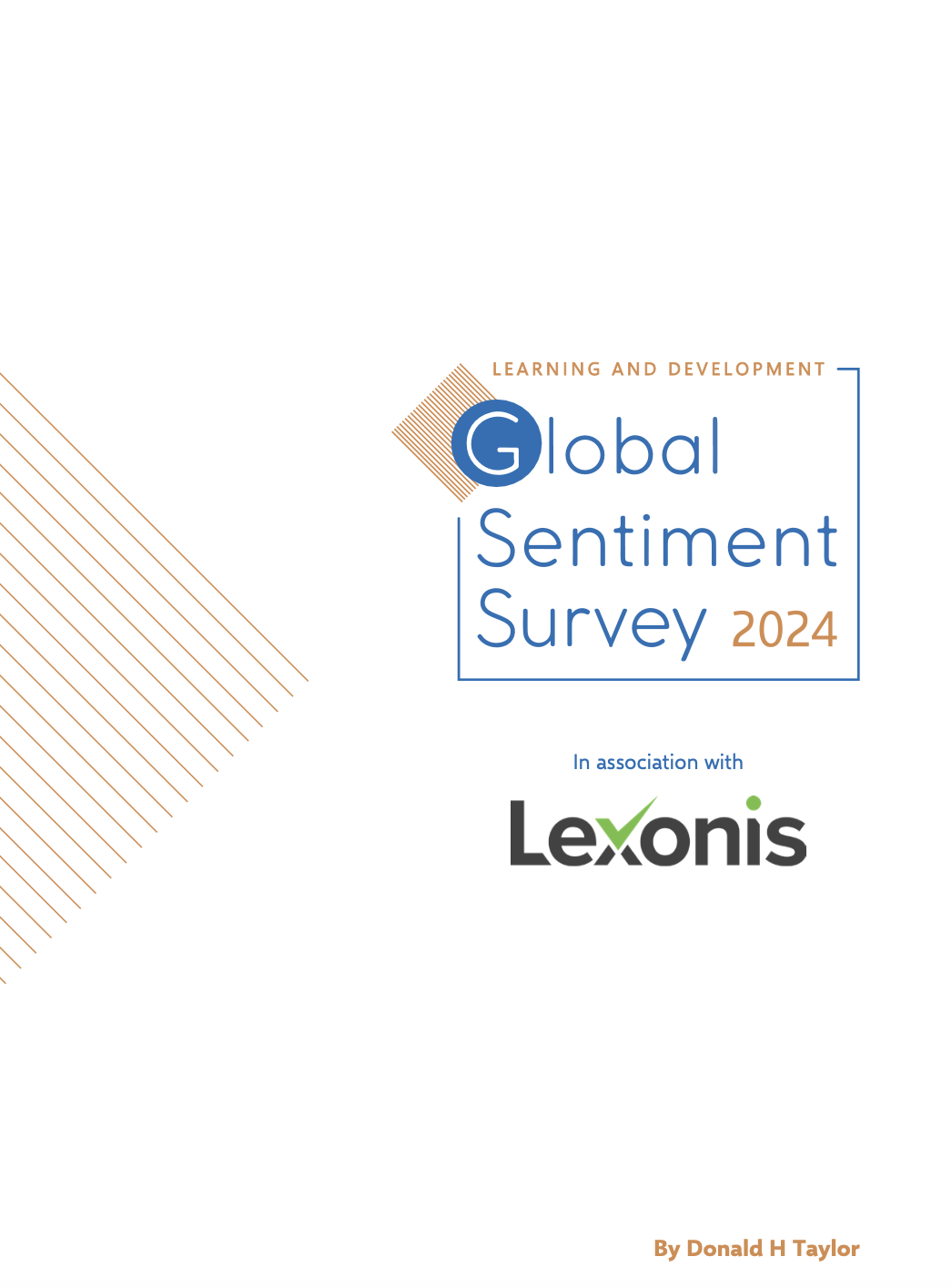How to Leverage HR Data for Strategic Decision-making
Steven Lowenthal
Donald H Taylor, Chair at the Learning Technologies Conference
In my previous blog I explored the importance of accessing data in your organisation. The next question has to be: how can we put that data to use? In particular, how can we make best use of it within an organisation’s talent and learning and development (L&D) functions?
As I explained, there are six steps to making use of data. These start with gaining access to the data and end with an iterative process of querying it, interpreting the results of that query, and then asking further, more refined questions that help us understand the data better.
But beyond accessing and querying data is a fundamental question: what can we do with the data?
This is an important question. Too often HR and L&D functions create reports, based on accurate data, which are next to useless. They are useless because they present the reader with facts, but nothing more. Data is the life blood of organisations, but on its own, it is next to useless. It needs to be interpreted and, eventually, turned into useful insight:

If I am driving along a road in west London, my GPS or sat nav may provide three data points: ‘N51.490818’, ‘W-0.206750’ and ‘Red’. By themselves, these are almost meaningless. Understood correctly, they are transformed from data into this piece of information: ‘The traffic light on the west side of the Talgarth Road is now red.’
Interesting though this might be, however, it remains simply information. With the addition of the context of where my car is, it is transformed into something actionable: ‘The traffic light I am currently approaching has turned red.’ Context turns information into useable knowledge, and the right context is crucial. It helps us decide what is important and not in the data stream. The traffic light’s exact location (the Talgarth Road) is irrelevant. What matters is that it is in front of me, and red.
Although this knowledge is useable, the question remains: what use shall we make of it? In this case the next step is pretty clear, we should bring our car to a controlled, complete stop. That’s insight, and it’s the end result of the simple chain we have just followed: collect data, understand it correctly to turn it into information, add context to create knowledge and interpret it via human experience to create insight.
Our minds carry out this chain of activities every day. However, within an organisation, each step of the chain is more complex, so that simply collecting the data from different sources and understanding it is often counted as a success. As a result, in HR and L&D, too often we present reports that reach only the information level of the data pyramid. We describe what is happening, without adding context nor interpretation. This is, simply, not enough to add any real value for the organisation or for ourselves. The benefits of moving up the data pyramid to offer insight, however, rather than simply presenting information, are substantial.
Most L&D functions collect a vast amount of raw activity data: days of training, courses completed, fill rates, certifications awarded and so on. Sometimes, the L&D function reports on this data alone to the rest of the organisation; often number of days’ training completed (or online course completions) is regarded as a key metric. However, while activity data may be a valid key performance indicator within the L&D department, it has little worth outside it. The volume of training is no indication of its value to the organisation.
Sometimes, the data is used with other data sources, to create information. A typical example is that training has led to the completion of certain compliance metrics (training + certification data) or that a number of competency gaps have been filled (training + competency management information).
However, this information is again, of little strategic value. Consider these two statements:
- After training the sales team, new orders for the X-90 range rose 16% overall (information)
- After training the sales team, new orders for X-90 rose 24% in the South East and 8% in the North, with the greatest increases in areas with Managers with at least 5 years’ experience (added information, allowing the creation of knowledge)
The added information in the second statement – that the more experienced managers oversee the greatest increase in sales – allows the reader to create knowledge and to go on to make inferences and to put the information to use. This is where data starts becoming valuable.
Providing this granularity of reporting is useful, if it meets the strategic goals of the organisation. This is why it would be even better if the L&D department were able to provide some insight, by setting the report in terms of that strategy. It might also suggest further action, such as this:
- After training the sales team, new orders for X-90 rose 24% in the South East and 8% in the North, with the greatest increases in areas with Managers with at least 5 years’ experience. This growth is in line with our corporate goals of 15% growth in revenue this year. It also suggests that ensuring the retention of good-quality managers, and supporting all managers, will enable sales growth to be sustained in the future (insight)
This could be accompanied by an overview of turnover rates among managers, and a review of their current and possible future skills and competencies. These reviews of business performance and future plans can only be provided if there is good data and systems to capture that data in the organisation, and they only become truly valuable when they are assessed and interpreted – as above – in light of the business strategy.
Perhaps this is a simple, rather abstract, example, but the principles hold true for all organisations, in all sectors. We are moving from an era when HR and L&D could justify their role by simply presenting information about their activity to management. No longer. The people in any organisation are crucial to its success and it is our duty to establish the systems and processes to help them flourish.
It is no longer enough to report on the traffic flows ahead, we have to help our organisations steer clear through them and onto the open road.
If you would like to find out more about how you can leverage Lexonis’ competency-based talent solutions to help you to make strategic HR decisions, feel free to contact us.
Note: the origins of the data pyramid, its number of levels and their labels are disputed. Sometimes the fourth level is called ‘Wisdom’, some people prefer a five level model: Data – Information – Knowledge – Insight – Wisdom. I am happy that all of these of these models can serve a purpose, which is to help us understand that data alone has limited uses. I am also aware that while all models help us interpret the world, they have limits to their use. The map is never the territory.
You may also like

There is a skills gap problem in the developed economies…

The business value of adopting a skills-based talent strategy and…

What is trending in workplace L&D this year? Are your…